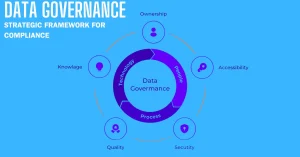Employee scheduling has become more vital than ever due to the emergence of hybrid workspaces and dynamic remote work cultures. Gone are the days when cluttered teams in enormous companies struggled to streamline workforce distributions. Now, businesses are leveraging employee scheduling software to automate workflows, allowing managers to create and assign shifts, track employee hours, and clear siloed communication frameworks. In addition, some resource management software also includes features like shift-swapping, time-off requests, employee availability tracking, and more. Still wondering how scheduling software works and how it can benefit your business? Read on to find out!
How does employee scheduling work?
Rising labor costs and regulatory compliance are transforming how companies work. Nowadays, organizations are more willing to hire employees across diverse geographical boundaries and in-office schedules. However, creating optimized timesheets and working according to predefined schedules is key. How? Let’s take an example.
You hire some new employees in your organization for a new project. The new team of employees has two options without defined schedules. Either they can burn the midnight oil working on the project and submit it before/on time without missing the deadlines and risking burnout, or they can work within their self-imposed time limit and miss the deadline. Scheduling is the key, and with resource management software, you can organize, optimize, and manage employee schedules so that company objectives and projects are completed on time.
This definition partially covers the realm of scheduling. Here’s how employee scheduling software works:
- Employee scheduling software allows employers to create and manage schedules for their employees.
- The software typically includes features such as shift scheduling, time and attendance tracking, and employee communication.
- Employers can use the software to create schedules based on employee availability, skill sets, and business needs.
- Employees can access their schedules through the software. The software allows employees to do shifts and requirements.
- The software can also track employee time and attendance, including clocking in and out, and automatically calculate hours worked and pay.
- Some employee scheduling software can integrate with payroll systems, making it easier to process payroll and ensure accurate payments.
- The software can alert managers and employees regarding upcoming shifts, shift changes, and other important scheduling information.
- The software’s data can be used to generate reports and analytics, allowing employers to optimize their scheduling practices and improve employee productivity and satisfaction.
- The software can help reduce scheduling errors and conflicts, leading to better staffing and improved customer service.
- With cloud-based employee scheduling software, employers and employees can access schedules and communicate from anywhere with internet access, making it easier to manage remote teams or multi-location businesses.
Problems that an Employee Scheduling Software can help to Avoid
- Over or under-scheduling employees: Scheduling too many or too few employees can lead to inefficient operations and customer dissatisfaction. Employee scheduling software can help businesses optimize their workforce by ensuring the correct number of employees are scheduled for each shift.
- Time-consuming manual scheduling: Creating schedules can be time-consuming, especially for businesses with a large workforce. Employee scheduling software can automate the scheduling process, saving managers time and reducing errors.
- Inadequate communication: Miscommunication between managers and employees regarding shift schedules can lead to missed shifts and confusion. Employee scheduling software can facilitate clear communication between managers and employees, ensuring everyone is on the same page.
- Compliance with labor laws: Employers must comply with labor laws that regulate employee working hours, breaks, and overtime. Employee scheduling software can help ensure compliance with labor laws, minimizing the risk of legal action.
- Shift swapping and coverage: Managers can be frustrated by schedule changes due to employee requests or unexpected events. Employee scheduling software can facilitate shift swapping and coverage, making it easier for employees to find substitutes and for managers to fill unexpected gaps.
- Employee preferences and availability: When creating schedules, it can be complex to consider employee preferences and availability. Resource scheduling software can help managers factor in these factors, leading to more satisfied employees and improved retention rates.
Conclusion
Employee scheduling software can help identify and fix issues such as inefficient resource use, inaccurate payroll, and a lack of real-time visibility into employee schedules. You can effortlessly orchestrate scheduling with the right resource management software from E-resource Scheduler.





